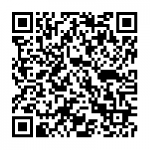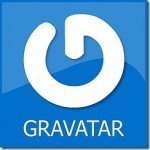Jacob S Paulsen's Blog, page 25
May 31, 2011
A Beginner's Guide to Email Marketing
 Email marketing is in the most basic form simplistic. Build a list and send stuff to it with both educational and promotional information. As a business owner or internet marketing professional you should consider gathering email addresses among your very top priorities. In fact, its hard for me these days to think of a profession or industry in which building an email list isn't a great idea. Attorneys, doctors, accountants, plumbers, sales people, media companies, etc can all benefit from gathering email addresses from existing and potential customers.
Email marketing is in the most basic form simplistic. Build a list and send stuff to it with both educational and promotional information. As a business owner or internet marketing professional you should consider gathering email addresses among your very top priorities. In fact, its hard for me these days to think of a profession or industry in which building an email list isn't a great idea. Attorneys, doctors, accountants, plumbers, sales people, media companies, etc can all benefit from gathering email addresses from existing and potential customers.
Adding Email Addresses to Your Lists
Here are a variety of common techniques or methods that you might employ in your business to gather email addresses:
Ask clients visiting the business for their email address. This can be done at point of sale or as part of any other paperwork that customers have to fill out in the course of doing business with you.
Fishbowl: Put a fishbowl at the front desk and offer to draw a business card once a month for a free lunch
Create an opt-in form on your website (done via the software discussed below). Offer an incentive for the opt-in, such as; Enter your name and email address below to: Receive Our Free Report on…, Enter to Win…, Receive discounts and offers, Register for event etc.
Host a contest in which people must email in a picture, story, etc to participate.
Gather existing customer email addresses from your sales staff or other employees.
What to Send to Your Contacts
The most effective way to build and maintain an email list is to offer educational information about your industry. If you are an attorney write short newsletters about identity theft, law enforcement confrontations, business incorporation, etc. Regardless of what industry you might be in you can always find good relevant content to send to your email contacts.
In addition to the educational information you also need to take advantage of your email campaigns to promote events, promotions, and products or services. Use the sidebar of your email to talk about events or sales that are upcoming. Promote your Facebook or Twitter profiles and encourage readers to share the email with their social networks. You can also attach coupons or specials in the email. Banner ads for your affiliates or business partners can also be effective.
What Email Marketing Software to Use
There are a vast number of high quality Email Marketing products that you can choose from. The three most popular that you have probably heard about or considered are: iContact, ConstantContact, PaulsenMail, and AWeber. I'm not going to spend the rest of this article splitting hairs over the small differences between these providers. Each offers a free trial and if you would like to spend some time looking you should go ahead. Each in my opinion does a comparable job of delivering the basic services that you will find necessary.
Another alternative for businesses who have some capital and would rather avoid monthly service fees is Interspire's Email Marketer. The software is expensive but you install it on your own server and don't have to worry about any monthly fees at all.
Again here are some links to follow for the most common providers:
iContact
ConstantContact
PaulsenMail
AWeber
VerticalResponse
GetResponse
Email Marketer
Hope you found this informative!
Jacob S Paulsen
 [image error]
[image error]





May 13, 2011
I'm Obsessed With QR Codes: What Are They & How Do You Use Them?
 How you seen these around? Primarily found on advertisements, QR codes are mobile friendly, square barcodes that can be scanned by smartphones. QR codes can contain a variety of different types of information from URLs to PayPal buy now links. The QR code directly to the left, when scanned, will take you directly to this exact same blog post in your mobile browser. Businesses are utilizing QR codes as a way to drive more engagement with their audience and track the effectiveness of their advertising. Let me give you an example.
How you seen these around? Primarily found on advertisements, QR codes are mobile friendly, square barcodes that can be scanned by smartphones. QR codes can contain a variety of different types of information from URLs to PayPal buy now links. The QR code directly to the left, when scanned, will take you directly to this exact same blog post in your mobile browser. Businesses are utilizing QR codes as a way to drive more engagement with their audience and track the effectiveness of their advertising. Let me give you an example.
When you browse for a new car on the lot of a car dealership you always look closely at the sticker in the window. That sticker shows all the options, fuel economy, and price. Did you realize that the average vehicle will go through 7 new window stickers while it is on the lot. That is a lot of wasted paper. Today some dealerships are instead printing off QR code stickers to put into the vehicle window. Those QR codes, when scanned, can direct users to a mobile friendly web page that shows all the same information. When pricing changes the dealer can update the webpage without printing off a new sticker for the car on the lot. In addition, because web traffic can be measured, the dealer will know which cars on the lot are getting the most interest and he will be able to track which cars are looked at after hours when window shoppers are still on the lot.
Here is a short list of different types of information you can embed into a QR Code:
Text
URL
Telephone Number
SMS Message
Email Address
Email Message
Contact Details (vcard)
Event (vcalendar)
Google Maps Location
Wifi Login (Android Only)
Paypal Buy Now Link
Social Media Links (Facebook, Twitter, LinkedIn, MySpace, Foursquare)
iTunes Link
YouTube Video
The possibilities are endless and the beauty is in your ability to better engage a consumer. Another example scenario. You run a static print ad in the newspaper, on a billboard, a magazine, or the back of the city bus. Print ads don't allow you to show any videos, animation, or audio testimonials. They are static and simple. If, you include a QR code on your advertisement you open up a world of possibility. A consumer sees the ad and scans it with their phone. Their phone opens up a mobile friendly page specific to that ad campaign that shows the live video, plays the live testimonial, or offers to take the consumer directly to your store via Google Maps.
How do you track the engagement. Only when you are directing the consumer to a webpage can you track the engagement. Utilize a URL tracking service such as Bit.ly to shorten each URL before you embed it into a QR code. That will allow you to track each scan of the QR code on the bit.ly dashboard.
How do you create a QR code? There are many different types of QR codes. Some can only be scanned by a specific app and other are generic and can be scanned by any barcode scanner app on any smartphone. To create the most generic type of barcode visit http://qrstuff.com. Follow the instructions on the screen to embed your content into the QR code, then just click on the download link to the right to save your image.
Go Ahead… create and scan as much as you can.
Jacob S Paulsen
 [image error]
[image error]





April 25, 2011
Gravitar… Avatars: Why Your Picture Doesn't Show Up Next To Comments
Quick Tip for my readers today. When you comment on other people's blogs you may wonder how you can get your picture to show up next to your comment; as it does in the case of many others.
Within blogs on blogspot.com those images come from each individual's Google profile since blogger is owned by Google and is part of the Google account system.

Outside of Blogger you need to get a Gravatar. Gravatar.com is the home of Globally Recognized Avatars. You setup a free account, upload your image, and decide what email addresses to associate that image with. Most web platforms (including WordPress) work with Gravatar.com to display images.
Want to test it? Go setup your account right now and then come back here to this post and leave a comment below. As long as you use an email address below that is associated with your Gravatar account your image will be displayed!
Jacob S Paulsen
 [image error]
[image error]





April 21, 2011
Salt Lake City Marathon: I'm Alive
In 2009 I ran a half marathon in Provo, UT. It was a fantastic challenge. In 2010 I competed in a triathlon relay with my family. This year I ran a marathon. I think I might be done with running challenges for a little while. I'm a runner and will always run but I don't intend to attack any running challenges beyond 26.2 miles so I'm exploring other outlets for my craziness. I might take up mountain climbing!
Getting ready for the marathon was extreme. I was really only able to train because of our current family situation having moved to Colorado ahead of the rest of my family. I had the time to hit the streets each night without taking time away from my precious wife and children. I followed a training program dictated by an app on my phone. I told it the date of the race, my goal time, and which day of the week I wanted to run my "long runs."
My goal was simple; to beat Oprah. When I heard that Oprah ran a marathon in 4:29 I knew that had to be my standard. I'm not a particular fan of Oprah and the fact that men are generally faster runners than women, really would have made me hang my head knowing that she was faster than me.
The Salt Lake City marathon on April 16th couldn't have had better weather. There were eight thousand people at the starting line. Most of these runners would only be running a 1/2 marathon but we all started from the same starting line at the same time. It took me 12 minutes to cross the starting line.


What was it like… battle. I felt fine for the first 15 miles or so. From 17 to 20 miles I could feel myself slipping and losing strength and capacity. From 22 to 25 miles I fought for every step. It was a life changing experience to battle against the overwhelming need to walk, stop, or drop. I think the pictures do a good job of showing about how I felt.
I finished in 4:20:52, about 8 minutes faster than Oprah! The feeling of elation at having run every meter and having finished made up for everything that I went through to get ready and to finish. Would I recommend it? Yes, I think anyone could do it who really believes they can do anything… and after you do this, you can do anything. It gave me a lot of perspective during the race when I passed a woman around 10 miles that was wearing a vest with the words "Blind Athlete" on it. She was being guided with a wrist leash by another runner. I also passed a man around 14 miles that only had one leg. His prosthetic leg caused a strange limp but I can tell you that fewer things in life could be more motivating.
What did I learn in 4 1/2 hours of pain? What could you learn? Well that is between the runner and the race.
Jacob S Paulsen
Thank you to my family, including parents, siblings, and my wife who supported me during training and during the race. Its the type of thing that can be impossible to do alone! Also a thank you to Jon Feltwell who often ran with me while training in Colorado.
In case you are curious I was 58th out of 102 people in my age group. 602nd out of the 1197 total people who finished the full marathon.
 [image error]
[image error]





April 20, 2011
A Great Business Book or App by John Eckberg
 A wonderful author and friend of mine has published a new book which gives great insight and inspiration to leaders and business people everywhere. "Pot of Gold: Business Book Nuggets for Leadership, Work and Career" by John Eckberg is a collection of business book excerpts. John has had an amazing life interviewing business success stories across the country. When I first spoke to John he was working as a business columnist at a newspaper in the mid west. He autographed my copy of his first book "The Success Effect
A wonderful author and friend of mine has published a new book which gives great insight and inspiration to leaders and business people everywhere. "Pot of Gold: Business Book Nuggets for Leadership, Work and Career" by John Eckberg is a collection of business book excerpts. John has had an amazing life interviewing business success stories across the country. When I first spoke to John he was working as a business columnist at a newspaper in the mid west. He autographed my copy of his first book "The Success Effect " which contains wonderful interviews with entrepreneurs and leaders such as Donald Trump and Deepak Chopra. I enjoyed it greatly and John gave me the opportunity to preview a draft of the upcoming Pot of Gold book that he was working on at the time. The insights are powerful and it represents a unique collection of inspirational thoughts.
" which contains wonderful interviews with entrepreneurs and leaders such as Donald Trump and Deepak Chopra. I enjoyed it greatly and John gave me the opportunity to preview a draft of the upcoming Pot of Gold book that he was working on at the time. The insights are powerful and it represents a unique collection of inspirational thoughts.
 I recently also found that John has been able to release an iPhone app which gives you access to that same content found in the book. The app is very affordable and the user interface is user friendly. I like to added feature which allows you to add your own quotes that you may pick up as you go through the day.
I recently also found that John has been able to release an iPhone app which gives you access to that same content found in the book. The app is very affordable and the user interface is user friendly. I like to added feature which allows you to add your own quotes that you may pick up as you go through the day.
Links:
Download the e-Book: Pot of Gold: Business Book Nuggets for Leadership, Work and Career
Download on Kindle: Pot of Gold: Business Book Nuggets for Leadership, Work and Career
Download the App on iTunes: Success by John Eckberg – iCrysta
Thank you John for continuing to inspire others toward greatness!
Jacob S Paulsen
 [image error]
[image error]





April 14, 2011
How You Lose Fans and Followers on Facebook & Twitter
I subscribe to the blog of Matt McGee, a search engine optimization expert of keeps a great blog for small business owners. Today I stumbled upon some research that he shared a little while ago about the reasons why consumers unfollow and unlike businesses on Twitter and Facebook. I think this is very insightful information. I have the tendency to run the risk of upsetting my followers because I'm an automation geek. My style of marketing is bent around putting things on auto-pilot and leveraging as many tools as possible. When it comes to social media that really can't work. Its crucial to every organization to remember that a commitment to social media is a commitment to engaging and socializing with customers.
The top three reasons why consumers stopped following businesses on both Facebook and Twitter were:
The Company Posted too Frequently
My Wall was becoming to crowded with Marketing Posts and I needed to Get Rid of Some of Them
The Content Became Boring or Repetitive Over Time.
The order of these top three responses was different for Twitter and Facebook. I encourage you to visit Matt's blog post to read all the data and his conclusions!
It was funny to look back at a blog post I wrote a year and a half ago called "Top 10 Ways to Guarantee I Stop Following You On Twitter." I wrote that right after I started using Twitter heavily and some things just never change!
Thanks Matt for the great information!
Jacob Paulsen
 [image error]
[image error]





April 4, 2011
Are You Still Ignoring Google Places? Components & Overview
Late October of 2010 Google changed the search engine marketing (SEM) game again. The format in which local business results are displayed within search results changed dramatically. In the past I used to think of paid search, local search, and organic search (seo) as distinctly different strategies of search engine marketing. The changes from last fall have caused these 3 distinctions to meld into one complete strategy. Local results are displayed in every different part of the page depending on the search being conducted, and more than ever local listings play a bigger part in organic search results.
What is Google Places? Google places is the Google local business directory. In many ways it another yellow pages online solution, different from yellowpages.com or citysearch.com because it integrates with the most popular search engine on the planet. Local businesses can go to www.google.com/localbusinesscenter and list or claim their business to ensure that they appear in relevant results.
Important components of Google Places. Your Google Places page is essentially your most effective or non-effective micro-site or landing page. Depending on the quality of the content it can be a great service to driving more phone calls to your business, and visitors to your site. Considering the massive impact of the service and the fact that it doesn't cost anything; Google Places has become essential. You can of course include basic info including phone, address, websites, etc. You can also include videos, pictures, and a description of your service or product. Don't forget to select 5 key categories in which you operate to help Google index your business in searches properly.
Google Places Reviews. Your Google Places page/listing will accumulate all the reviews about your business from the various popular consumer review sites including Yelp, UrbanSpoon, InsiderPages, CitySearch, Dine.com, Travelocity, etc. In addition consumers can post reviews directly to your Google Places page. Both types of reviews are important. You want to drive more good reviews to the various consumer review sites so that you increase your total exposure and reputation online. You want to especially focus on Google Places reviews because it will give you greater strength in your Google Boost advertising (to be discussed below). Utilize the friends and family who do business with you to get some positive reviews quickly. The total number of reviews and how many stars out of 5 that you have on average will be BIG factors that will separate you from your competition in search results. RESPOND to negative reviews. Negative reviews can be your best friend if you respond with concern, eager to make a bad experience positive.
Google Places Tags. For $25 per month you can include a yellow "tag" on your Google Places listing. For many larger businesses this is a no-brainer!! All the research supports that that yellow tag and its accompanying offer/special will bring you more clicks than your competition. It does not however guarantee number one results on the page.
Google Boost. Google Boost is the simplified version of Google Adwords. It allows you to utilize your current Google Places listing as a paid ad in the paid search results of the search results page. It removes a lot of the complicated work that generally goes into a Google Adwords campaign. You can still set campaign budgets or weekly/daily budgets. This is where your Google Places reviews really pay off. You may have 200 total reviews on Google Places, of which 180 came from third party review sites and 20 were made natively on your Google Places page. In that case your Google Boost ad will show only the 20 reviews.
Google Pages Analytics. Like any other type of online advertising you will be able to measure the results from your Google Pages listings. The analytics will outline how many impressions and clicks your listing received over a specific time period. You will also be able to see the top search terms which led people to your page. This is an effective tool that you can use to determine the best keywords for your paid search and SEO efforts.
Stop ignoring this powerful & free tool and get your listing claimed and built out right away!
Jacob S Paulsen
 [image error]
[image error]





March 17, 2011
The Four Cycles of Reaching Your Goal
 In high school I ran distance races in track and field. My favorite was the mile (technically 1600 meter) race. A standard American track is 400 meters around which makes the 1600 meter race exactly 4 laps. There is a distinct mental and physical pattern that changes during the course of those laps around the track. Over the years I have come to realize that the same pattern applies to any difficult goal or challenge in life. Not all undertakings include 4 laps around a track but if you generally divide any goal or challenge in 4 equal parts (quarters) then you can apply the pattern below accordingly. Understanding the flow of thought and attitude of the four quarters/laps will help you better prepare for success.
In high school I ran distance races in track and field. My favorite was the mile (technically 1600 meter) race. A standard American track is 400 meters around which makes the 1600 meter race exactly 4 laps. There is a distinct mental and physical pattern that changes during the course of those laps around the track. Over the years I have come to realize that the same pattern applies to any difficult goal or challenge in life. Not all undertakings include 4 laps around a track but if you generally divide any goal or challenge in 4 equal parts (quarters) then you can apply the pattern below accordingly. Understanding the flow of thought and attitude of the four quarters/laps will help you better prepare for success.
The first lap: In the first lap of the race your body is running on adrenaline in addition to the physical reservoir of strength. Things are just beginning and you still have a clear picture of the end of the task in your mind. You can still clearly see the prize that will await you if you succeed. The crowd is very active in this first quarter as they watch you establish yourself into a position and a pace. You can see the cheerleaders and hear the shouts of encouragement. Toward the latter part of that first lap your training and preparation start to take control. You settle in and now, having your bearings you fix your eyes forward.
The second lap: In the second lap things begin to push you beyond comfort. The crowd and spectators aren't paying as much attention and their cheers are less enthusiastic. That clear picture of the prize at the end of the race begins to blur and your mind starts to wonder to other things. You think of the pain and of other non consequential things. Your pace begins to falter some but you still move forward with strength (as the adrenaline has faded).
The third lap: Pain and struggles. You are only half way done and you begin to entertain thoughts that you may not be able to win. Deep down you know that your training has prepared you to see this to the finish but the doubt about your ability to achieve the great result you originally hoped for is changing your actions. You hurt and without any conscious thought you are slowing down to avoid crossing the threshold of a discomfort that your mind tells you that you cannot endure until the end.
The final and fourth lap: You hear the cheers from the spectators. You wonder if they have been there all along despite you only hearing them now. The cheers and the general realization that you are almost done wake you out of a sleep. Even your top levels of consciousness are willing to endure the greater pains in order to make a final attempt at the best results possible. As you enter the final stretch the prize is clearest in your mind and you put everything out on the line to achieve it. Your body finds the last of what is left of adrenaline and gives you an extra edge of resources. You finish.
However you want to apply the lessons learned in the four laps you must remember that races are won in the 2nd and 3rd lap. Your ability to remain "awake" in the middle of the challenge, keeping your mind's eye fixed on the final goal will bring you to achieve or to fail.
Jacob S Paulsen
[image error]






March 14, 2011
What Would (Insert Your Name Here) Do
About 3 weeks ago I hit a wall in my marathon training. I was beating up my body trying to run greater distances each night and I didn't seem to be able to push the 10 mile mark. I needed help. I thought to myself:
What would Donald Trump do? Hire the most elite nutrition and running coaches in the country.
What would Chuck Norris do? Run harder and faster until he started to bleed or pass out.
Neither of these sounded like me. I could also join a "team in training" program, search the internet for a training schedule, or call a coworker who had run a marathon a few years ago. Ultimately I thought to myself:
What would Jacob Paulsen do? Search on my phone for a running training app that will tell me how far to run each day leading up to the race.
That has worked out well for me.
We are each unique and while this is a trivial example we need to remember that doing what others would do isn't always the best thing for us to do.
Jacob S Paulsen
[image error]






February 26, 2011
The Oasis Within
I follow the writings of a philosopher named Tom Morris. He is the author of several great books and he writes occasionally for the Huffington Post. His wisdom is bread to my soul and this is an example of a short story of wisdom he recently shared.
http://www.huffingtonpost.com/tom-morris/the-oasis-within_b_819491.html
Jacob Paulsen
[image error]































